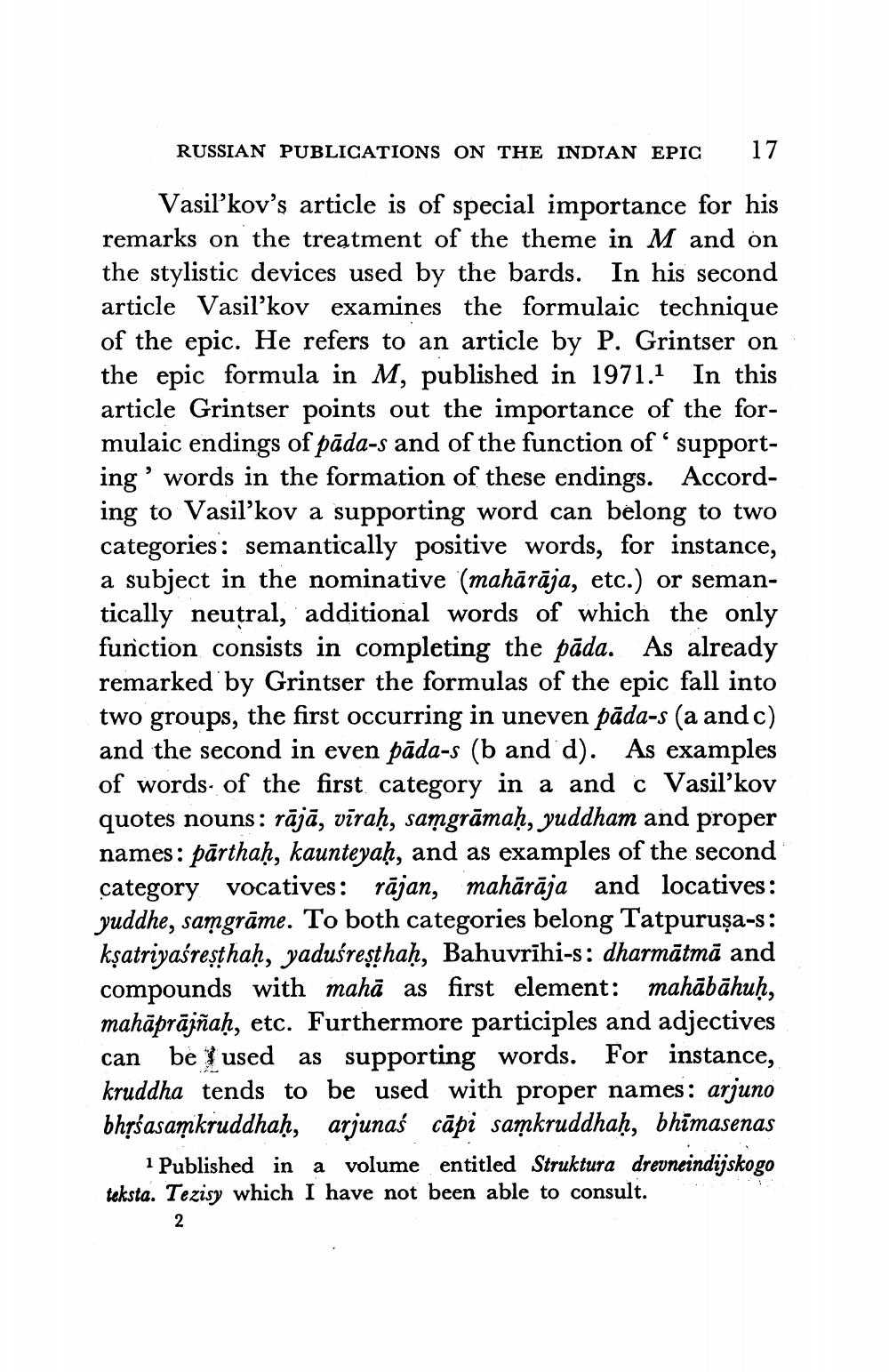________________
RUSSIAN PUBLICATIONS ON THE INDIAN EPIC
17
Vasilkov's article is of special importance for his remarks on the treatment of the theme in M and on the stylistic devices used by the bards. In his second article Vasil’kov examines the formulaic technique of the epic. He refers to an article by P. Grintser on the epic formula in M, published in 1971.1 In this article Grintser points out the importance of the formulaic endings of pāda-s and of the function of supporting' words in the formation of these endings. According to Vasil’kov a supporting word can belong to two categories: semantically positive words, for instance, a subject in the nominative (mahārāja, etc.) or semantically neutral, additional words of which the only function consists in completing the păda. As already remarked by Grintser the formulas of the epic fall into two groups, the first occurring in uneven pāda-s (a and c) and the second in even pāda-s (b and d). As examples of words of the first category in a and c Vasil'kov quotes nouns: rājā, vīraḥ, samgrāmaḥ, yuddham and proper names: pārthaḥ, kaunteyaḥ, and as examples of the second category vocatives: rājan, mahārāja and locatives: yuddhe, samgrāme. To both categories belong Tatpurușa-s: kşatriyaśreșthaḥ, yaduśreșthaḥ, Bahuvrīhi-s: dharmātmā and compounds with mahā as first element: mahābāhuḥ, mahāprājñaḥ, etc. Furthermore participles and adjectives can be used as supporting words. For instance, kruddha tends to be used with proper names: arjuno bhrśasamkruddhaḥ, arjunaś cāpi samkruddhaḥ, bhimasenas
Published in a volume entitled Struktura drevneindijskogo teksta. Tezisy which I have not been able to consult.




